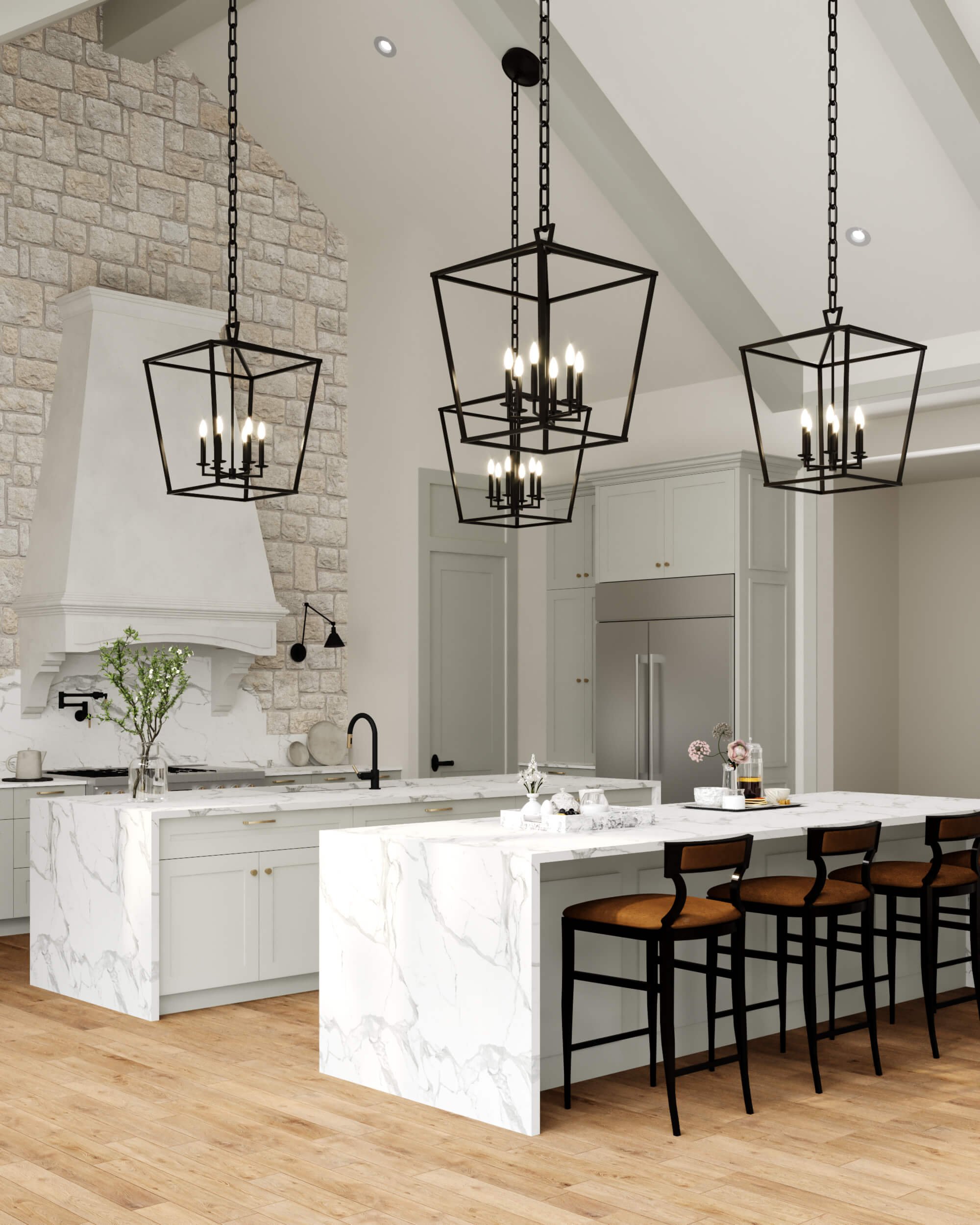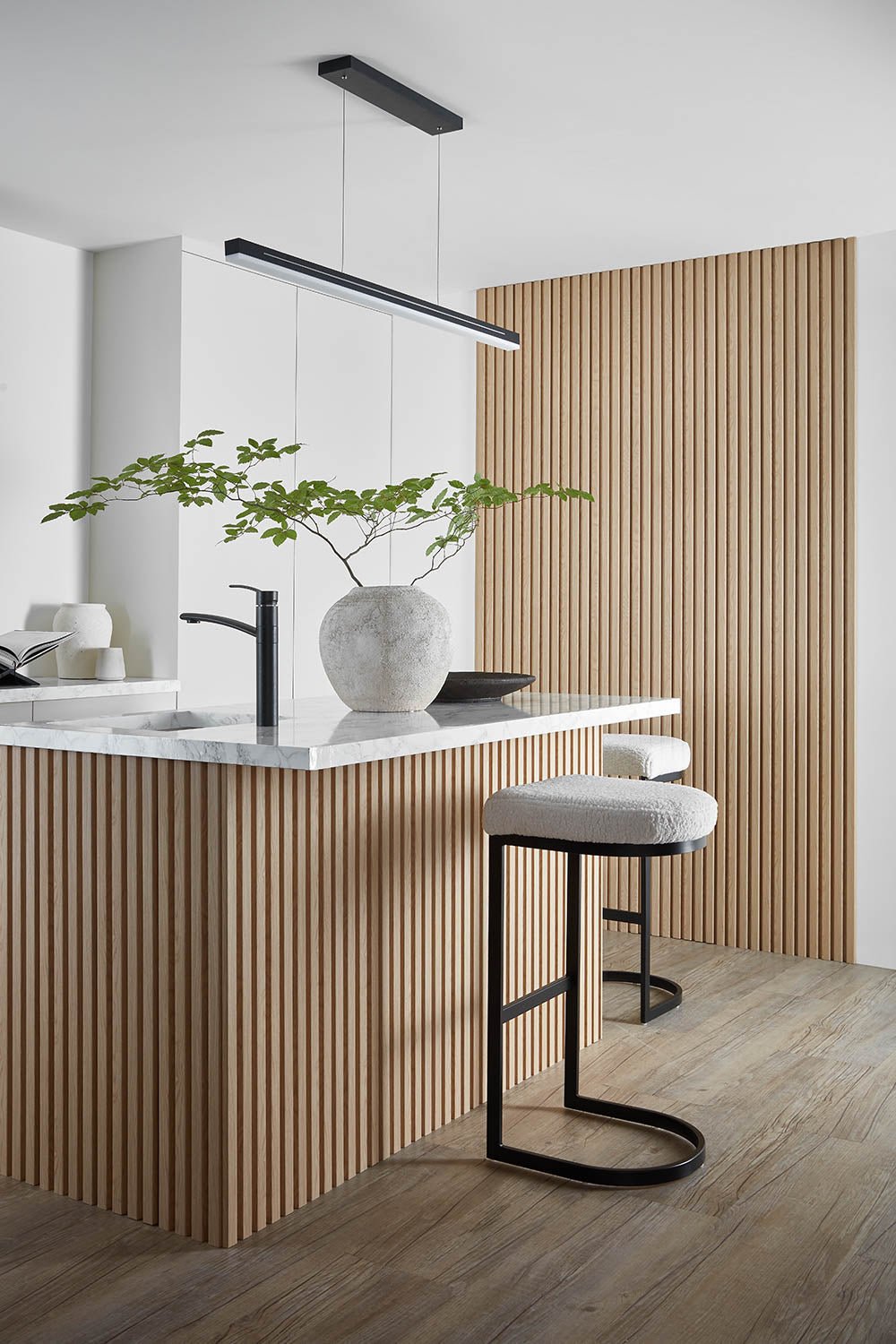Are you looking to breathe new life into your kitchen island? Decorative panels may be the perfect solution. As someone who has personally embarked on the journey of kitchen renovations, I can assure you that the right decorative touches can elevate your space from mundane to magnificent. In this extensive guide, we’ll delve into everything you need to know about decorative panels for kitchen islands, offering you insights, expert recommendations, and inspiration.
What Are Decorative Panels?
Decorative panels are architectural elements typically used in interior design to enhance the aesthetic appeal of a space. When it comes to kitchen islands, these panels can be attached to sides or fronts, serving both functional and decorative purposes.
Common Materials for Decorative Panels
- Wood
- Plywood
- HPL (High-Pressure Laminate)
- Metal
- Glass
- Fabric
Benefits of Using Decorative Panels for Kitchen Islands
Incorporating decorative panels into your kitchen island design can provide several benefits:
- Aesthetic Appeal: Enhance the visual interest of your kitchen.
- Customization: Choose styles and colors that reflect your personality.
- Concealment: Hide imperfections or wiring behind the panels.
- Durability: Many materials are designed for high durability and ease of maintenance.
- Increased Value: Well-designed kitchens can improve your home’s overall market value.
Types of Decorative Panels for Kitchen Islands
Here’s a closer look at various types of decorative panels suitable for kitchen islands:
1. Wood Panels
Wood panels add warmth and charm to a kitchen. They are customizable and can be stained or painted.

2. Plywood Panels
Plywood is a cost-effective option that offers durability and flexibility in design.
3. High-Pressure Laminate (HPL)
HPL panels are resistant to moisture and scratches, making them a practical choice for busy kitchens.

4. Metal Panels
Metal panels lend a modern touch, ideal for contemporary kitchens. They can be shiny or matte depending on your preference.
5. Glass Panels
Glass panels can add a sleek, elegant look. They are best used in light-colored kitchens to maintain an airy feel.

6. Fabric Panels
Though less common, fabric-covered panels can bring texture and color to your kitchen island, ideal for cozy or eclectic themes.
Choosing the Right Decorative Panel for Your Kitchen Island
It can be overwhelming to choose the right decorative panel given the multitude of materials and styles available. Here are some factors to consider:

Style of Your Kitchen
Consider the overall theme of your kitchen. Is it traditional, modern, or rustic? Match your panel choice accordingly.
Durability and Maintenance
Some materials require more upkeep than others. If your kitchen sees heavy use, opt for durable materials.

Budget
Budget constraints can guide your choice. Wood and plywood tend to be more affordable, while glass and metal can be pricier.
Customization Options
Personalization options can greatly influence your choice. Some manufacturers offer custom sizes and designs to fit your needs.

Popular Styles of Decorative Panels for Kitchen Islands
Let’s explore some of the most popular styles of decorative panels to inspire your kitchen island makeover:
Shaker-Style Panels
Shaker-style panels offer a classic look with their simple, clean lines. They work well in both traditional and modern kitchens.

Beadboard Panels
Beadboard panels are perfect for achieving a cottage or farmhouse aesthetic, adding depth and character.
Slatted Panels
Slatted panels can lend a contemporary vibe, offering a sleek, streamlined appearance. They are especially popular in minimalist designs.
Textured Panels
Textured panels can add dimension and interest. Look for options with embossed or carved designs for added flair.
How to Install Decorative Panels on Your Kitchen Island
Installing decorative panels can be a DIY project if you’re handy, or you can hire a professional. Here’s a brief overview of the process:
Tools and Materials Needed
- Decorative panels
- Measuring tape
- Saw (for cutting panels as necessary)
- Wood glue or adhesive
- Screws or nails
- Drill
- Sanding block (for smoothing edges)
- Paint or stain (if applicable)
Step-by-Step Installation Process
- Measure the dimensions of the island where panels will be applied.
- Cut the panels accurately to fit the measurements.
- Apply wood glue or adhesive to the back of the panel.
- Press the panel onto the surface of the island, ensuring it is level.
- Secure in place with screws or nails if necessary.
- Allow the adhesive to dry according to manufacturer instructions.
- Finish with paint or stain as desired.
Comparison Table of Decorative Panel Materials
| Material | Durability | Maintenance | Cost | Style |
|---|---|---|---|---|
| Wood | High | Moderate | Moderate | Traditional/Rustic |
| Plywood | High | Low | Low | Versatile |
| HPL | Very High | Low | Moderate | Contemporary |
| Metal | Very High | Low | High | Industrial/Modern |
| Glass | Moderate | High | High | Elegant/Modern |
| Fabric | Low | High | Low | Eclectic/Cozy |
Pros and Cons of Decorative Panels for Kitchen Islands
Pros
- Enhanced visual appeal and personalization.
- Increased home value through improved design.
- Versatile options available for various styles and budgets.
- Ability to hide imperfections in cabinetry or construction.
Cons
- Some materials may require regular upkeep.
- Cost can add up depending on the choice of material.
- Improper installation can lead to issues with durability.
- Some materials may not be suitable for high-moisture environments.
Cost Considerations for Decorative Panels
The cost of decorative panels can vary widely depending on material, size, and complexity of installation. Here’s a rough estimate of what you might expect to spend:
- Wood Panels: $50 – $200 per panel
- Plywood Panels: $20 – $100 per panel
- HPL Panels: $30 – $150 per panel
- Metal Panels: $100 – $300 per panel
- Glass Panels: $150 – $400 per panel
- Fabric Panels: $20 – $80 per panel
Expert Tips for Selecting Decorative Panels
Having navigated through the world of kitchen renovations, I’ve gathered a few expert tips that can make your selection process smoother:
1. Visualize Your Space
Before making a purchase, visualize how the panels will look in your space. Use design software or apps to see how different options might appear.
2. Sample Swatches
Order sample swatches whenever possible. Seeing materials in your kitchen’s lighting can reveal how colors and textures interact.
3. Consult Professionals
If you’re feeling uncertain, consult with a kitchen designer. Their expertise can provide invaluable insights into styles and functionalities.
4. Don’t Forget About Lighting
Consider the lighting in your kitchen. Certain panels might look stunning under natural light but appear dull under artificial lighting.
Frequently Asked Questions (FAQs)
What is the best material for decorative panels?
The best material depends on your kitchen style, budget, and maintenance preference. Wood offers warmth, while HPL is durable and easy to clean.
Are decorative panels easy to install?
With basic tools and some DIY knowledge, decorative panels can be installed easily. However, hiring a professional is advisable for complex designs.
How can I maintain my decorative panels?
Maintenance varies by material. Generally, wood and fabric require more upkeep than laminate or metal. Follow the manufacturer’s care instructions for best results.
Can decorative panels be used in other areas of the home?
Absolutely! Decorative panels can be used in living rooms, dining areas, and even bathrooms to enhance the overall aesthetic of your home.
Do decorative panels affect home value?
Well-executed decorative panels can significantly enhance your home’s value by improving visual appeal and modernizing the space.
Conclusion: Transform Your Kitchen Island with Decorative Panels
Decorative panels are an excellent way to refresh your kitchen island and showcase your personal style. With a variety of options available, the perfect panel can elevate the heart of your home. Whether you opt for the classic charm of wood or the sleek modernity of metal, these panels can transform your culinary space into a haven of creativity and warmth.
Now that you’re armed with knowledge and inspiration, it’s time to start planning your kitchen transformation! Your dream kitchen awaits!